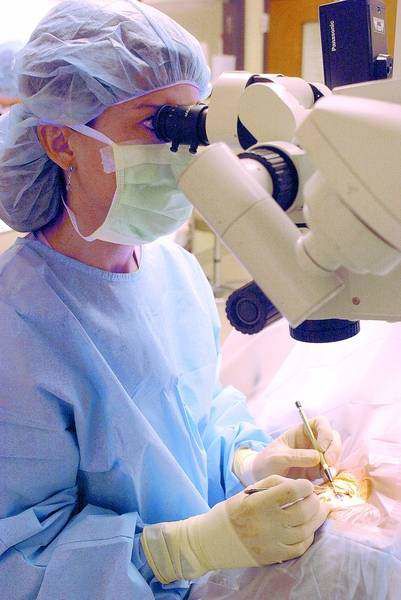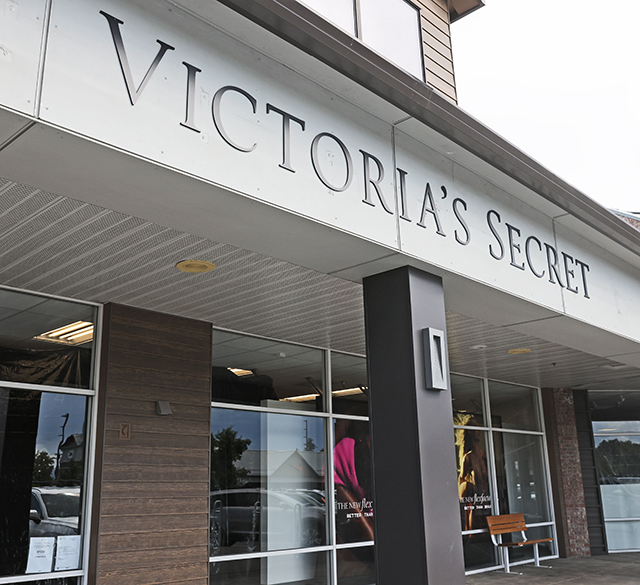New lenses cure cataracts
Published 4:00 am Wednesday, March 22, 2006

- Dr. Patricia Buehler makes an incision into patient Pat Hunt's left eye while performing cataract surgery in the Bend Surgery Center on Monday. A new approach to eye surgery allows cataract patients to end their dependence on eyeglasses.
At 72, Claudia Krumpholz can thread a needle without wearing glasses.
She can read a book or get up in the middle of the night to check the setting on the thermostat without fumbling around for the glasses she used to need regularly.
Trending
Thanks to a recent surgery to remove her cataracts and the development of a new replacement lens, Krumpholz, of Bend, said she can see like she hasn’t been able to in years.
”I can thread the needle. That, to me, is amazing,” Krumpholz said. ”I can sit here and see the eye of the needle.”
Krumpholz’s physician, Dr. Ida Alul, and fellow ophthalmologist Dr. Patricia Buehler, both of InFocus Eye Care Center, began using new multifocal replacement lenses several months ago. The technology was approved by the U.S. Food and Drug Administration in March 2005 and allows many patients who have had cataract surgery to stop wearing glasses altogether.
”I think this is a revolution in cataract surgery,” Buehler said. ”This new lens is very exciting for cataract patients.”
Cataracts are the clouding of the eye’s natural lens and occur commonly with age, according to the National Eye Institute.
To remove the cataract, surgeons remove the entire lens and replace it with an artificial one.
Trending
Cataract surgery is different than the common LASIK surgery often performed on younger patients mostly to correct problems with distance vision, Buehler said.
Buehler explained that replacement lenses have been surgically placed in people’s eyes for more than 50 years. During World War II, she said, physicians realized that pilots were living with shards of plastic from their windshields in their eyes without infections or ruining their eyesight. That realization led to the development of the first replacement lens.
For years in the United States, ophthalmologists have used mono-focal lenses during cataract surgery. The result is clearer vision for the patient than living with the cataract, but the mono-focal lens is usually designed to only help the person see distances, Buehler said, meaning glasses are often still needed for reading.
”This gives patients more options and more of a range for focusing than what we have had before,” Alul said.
She and Buehler have gone through training to use two different types of multifocal lenses made by different companies. They learned to screen patients before recommending the multifocal lens because, Buehler said, it doesn’t work well for everybody.
”Not everybody is a candidate,” Buehler said. ”If they have too much astigmatism they can’t get the lens, or if they have any other eye diseases.”
It’s also important that patients actually have a desire to no longer wear glasses, she said. Some patients have worn glasses for so long they would feel naked without them.
Pat Hunt, an avid skier, biker and swimmer, said she thinks she’ll be much better off without having to worry about glasses or contact lenses. The 74-year-old Bend resident had surgery Monday to replace her cataract with a multifocal lens in her left eye. She’ll have her right eye operated on in two weeks.
The day after the surgery, Hunt said she was already noticing a big difference in her vision.
”I sat in (Buehler’s) office and read an article in People magazine without putting on my cheater glasses that I’ve had to do for a long time,” Hunt said. ”I’m very pleased at this point.”
Studies have shown a vast majority of patients are happy with their multifocal lenses, according to the National Institutes of Health. But Buehler said about 3 percent to 5 percent of patients nationwide are unhappy with them. Because of the way the lenses are designed, the brain has to adjust to focusing through them, which can take time.
Some people report seeing ”halos” around lights when they drive at night. But, Alul said, most of her cataract patients are already infrequent night drivers because of their vision problems.
Dr. Robert Mathews, an ophthalmologist at Bend Memorial Clinic, said multifocal lenses are a hot topic in his field and were discussed at a recent Oregon Academy of Ophthalmology meeting. He has scheduled his first patient to receive a multifocal lens, but hasn’t yet done the procedure.
”The advantage is when it works well, and as intended, someone may be nearly or completely free of glasses,” Mathews said. ”The cons are that it won’t work out that way for everyone. In some cases it decreases their dependence but doesn’t completely eliminate the need (for glasses.) They will have spent extra money on that.”
Medicare, the federal health care program for seniors and the disabled, does not cover multifocal lenses. The federal program allows patients to choose the multifocal lens and still covers the surgery, but they have to pay for the lens itself out of pocket.
Those costs are on average $1,800 per eye, Buehler said.
For Barbara King, one of Buehler’s patients who received the multifocal lenses in late November and early December, the extra expense was worth the result.
”For 55 years, I wore glasses. First thing in the morning, I put them on. Last thing at night, I took them off,” King, 73, said. ”It’s worth it. I just wish they had had this years ago.”








